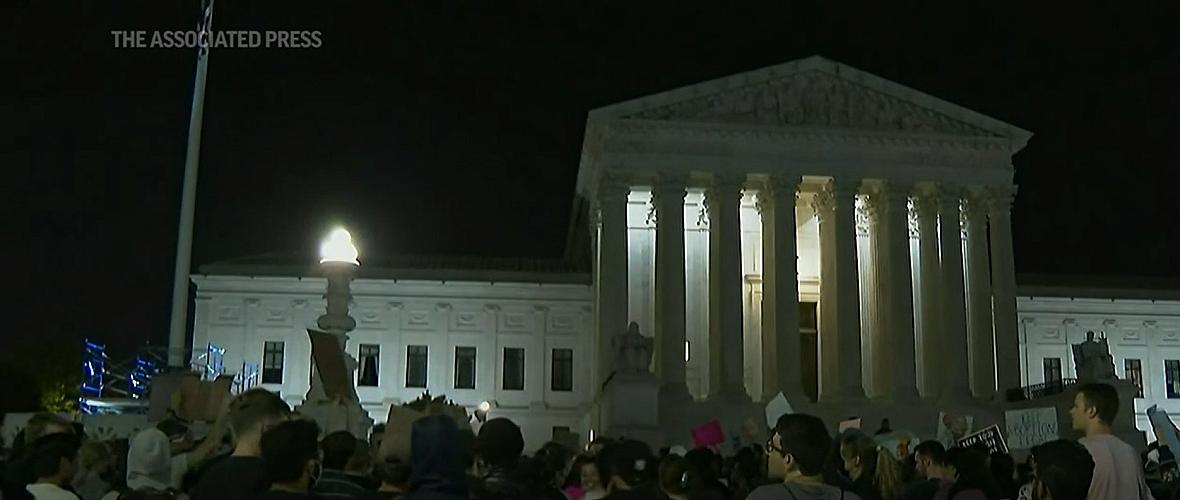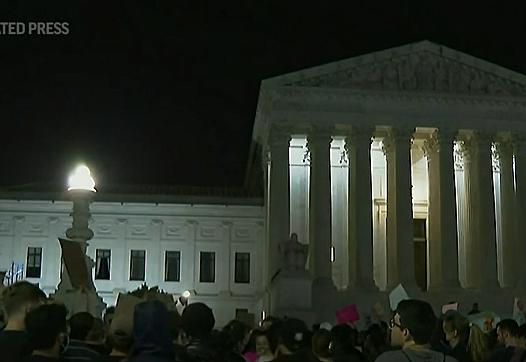Under decades-old Hyde Amendment, millions of Americans already live in a 'post-Roe' world
The story was originally published in USA TODAY with support from our 2022 Impact Fund For Reporting on Health Equity and Health Systems.

USA TODAY
Rachael Lorenzo tried to seek an abortion after doctors found a pregnancy complication that would likely lead to a miscarriage.
But the clinic on the Acoma Pueblo, an Indigenous community in west central New Mexico, didn’t offer abortions. Clinicians said to wait until the miscarriage occurred naturally.
“That experience was incredibly traumatizing,” Lorenzo said, recalling the miscarriage in 2013.
Lorenzo learned that federal funds, such as those that support the agency responsible for Indigenous health care, the Indian Health Service, can’t be spent on abortions.
That’s because of the Hyde Amendment, a provision passed three years after the landmark Roe v. Wade decision that restricts federal spending on abortions. Because of Hyde, millions of people across the U.S. already live in a “post-Roe” world, out of reach of abortion care.
Overturning Roe could make matters worse, experts say. By further amplifying long-standing inequities in reproductive care disproportionately faced by people of color, its reversal would put those who suffer greater maternal health risks in further peril.
Who will be impacted most if Roe is overturned?
Millions of Americans of childbearing age who depend on government support for their health care already face the barriers imposed by Hyde. Indigenous communities like Lorenzo’s. Military service members. Medicaid beneficiaries, who are disproportionately of color and make up the majority of patients at low-income, federally funded community health clinics across the nation.
Most callers to Access Reproductive Care-Southeast, an abortion assistance group, are Black women and birthing people who receive Medicaid or are uninsured. ARC operates in six states in the South, where legislatures are expected to ban abortion if Roe is overturned.
Oriaku Njoku, ARC’s co-founder and executive director, said that even with Roe in place, people still struggle to access care because of the Hyde Amendment’s restrictions.
“Yes, abortion is legal, but it's not accessible for so many people,” Njoku said. “The idea of being able to have $500 on hand to pay for a first-trimester abortion is something that is not accessible or reality for a lot of people.”
Njoku said Roe’s repeal would “make it even more of a burden.”
“The post-Roe reality that folks are afraid of are actually the lived experiences of the South right now,” Njoku said.
Liza Fuentes is a senior researcher at the reproductive health policy research group Guttmacher Institute. She said many communities already “do not have the dignity to have a timely, affordable abortion, because so many restrictions are layered on top of it.”
“Were it not for the Hyde Amendment, their abortion care would be covered,” she said.
Reproductive rights advocates and clinicians have long pressed for reversal of the Hyde Amendment because of its life-threatening and life-altering consequences for women of color.
‘High and dry’: Abortion bans could be riskiest on women in maternal health care 'deserts'
Amid the national reckoning with structural racism, politicians have, too. Recently, Rep. Ayanna Pressley, D-Mass., who has led a coalition to repeal the provision, wrote in a Medium post that “now is the moment to dismantle systems of oppression,” like those that “push comprehensive reproductive health care out of reach for our nation’s most vulnerable.”
“I need you to legislate and vote like lives depend on it,” Pressley wrote to her colleagues, “because they do.”
But so far, such efforts haven’t been successful. Hyde has been renewed in federal budgets every year since it passed in 1976.
The Biden administration excluded the amendment from its 2023 federal spending proposal, but Republicans are expected to oppose the move. The administration also tried to eliminate the rider from the 2022 budget but conceded to Republican demands. Biden supported the rider for years but reversed his stance while campaigning for president.
For people on public insurance, the lack of abortion coverage means saddling out-of-pocket costs from about $500 up to $1,000 for the procedure, plus logistical barriers including childcare, travel distance and expenses and time off work.
More:Abortion by pill figures to rise if Supreme Court overturns Roe v. Wade
Low-income moms can find themselves in an economic bind, asking: “Do I pay for my abortion? Or do I go without groceries for a month, or more?” Lorenzo said. The Laguna Pueblo, Mescalero Apache and Chicana mother of two co-founded Indigenous Women Rising, a reproductive care resource group that offers an abortion fund for tribal women.
These obstacles mean women are forced to travel at least 50 miles and are twice as likely to be unable to receive an abortion. More than 20% of women forced to travel more than 100 miles won’t get one. A recent study published in JAMA Network Open found the longer the distance to an abortion facility, the greater the delay in obtaining abortion care and the more likely someone is to not receive one. Most of the study’s participants were Medicaid recipients.
Though 16 states offer their own abortion funding for Medicaid patients, the Hyde Amendment has an impact across more than three dozen states, according to Guttmacher – affecting 7.8 million Medicaid patients of reproductive age. Half are women of color, including Black and Hispanic women, who already experience higher rates of maternal death.
More than 2 million American Indian and Alaska Native people receive health care through the Indian Health Service. The program typically operates the only health facilities for miles near tribal lands.
Native women would often ask Lorenzo, a community leader, why they couldn't get an abortion at their local IHS-run clinics and ask for help. “That involves a lot of political education about the Hyde Amendment and why it pertains to Native people,” she said.
That’s why Lorenzo started the abortion fund at Indigenous Women Rising, educating and advocating for the community's health and reproductive rights. “It’s not like we can just go anywhere.”
Lorenzo said the lack of coverage ignores women’s specific needs and vulnerabilities within circumstances like poverty, which pregnancy can exacerbate.
“We have to take into consideration when we're helping specifically Indigenous people access abortion care, especially since a lot of our folks, unfortunately, live in domestic violence situations, or they’re caregivers of elders, or they're under 18,” Lorenzo said.
How many abortions are actually performed in the US?
Dr. Rebecca Simon, a family medicine physician in a New Mexico IHS facility, said that as a doctor, it can feel as if your hands are tied.
“I’ve been trained to provide abortions, and I want to be that person for my patient, who can allow them to get safe, effective care in the community they live in,” Simon said, “it can be frustrating.”
Ushma Upadhyay, an associate professor in obstetrics, gynecology and reproductive science at University of California, San Francisco, studies abortions and health insurance. In an analysis of pregnancy outcomes among Medicaid patients searching for abortions online, she found that state-level restrictive abortion policies were associated with not getting an abortion at all.
“There are a lot of hurdles,” said Upadhyay, adding that restricting abortion access "can change pregnant peoples’ entire life trajectory.”
The landmark Turnaway Study from UCSF documented harms women experience after abortion denials. They include long-lasting economic hardship and insecurity, remaining with a violent partner, and dangerous pregnancy-related health conditions like hypertension and postpartum hemorrhage, which women of color already disproportionately endure.
Homicide is a leading cause of death during pregnancy. These women are more likely to be killed.
Time and time again, Simon said, she has seen those harms.
“I’ve had patients who told me they didn’t want to be pregnant but who came back several months later having been unable to get the care they needed," Simon said. “I do worry that the barriers these patients have to overcome can be too big of a burden. It really feels like moving mountains.”
Kwajelyn Jackson, executive director of the Atlanta-based abortion clinic Feminist Women’s Health Center, said her center serves 2,500 to 3,000 abortion patients a year. More than half are Black, and two-thirds are low-income, on Medicaid or uninsured.
“Abortion is carved out as being separate from or different from other kinds of health care,” Jackson said. “Communities of color, who have been harmed by or neglected by traditional health care systems, are also the very ones who are not able to access abortion services in the ways that they need.”
Lorenzo gets calls from several states including Oklahoma, where the governor recently enacted the most restrictive law in the country, banning abortion from fertilization. The advocate wishes policymakers would respect women’s agency, circumstances and lived experiences.
“The ability for them to make decisions about their own bodies is sacred.”
Pregnancy-related deaths could rise 20% or more in states that outlaw abortion, experts say
Nada Hassanein is USA TODAY's environmental and health inequities reporter. Eli Marcel Cahan is a freelance journalist. Both are recipients of the 2022 USC Annenberg Center for Health Journalism Impact Fund.



